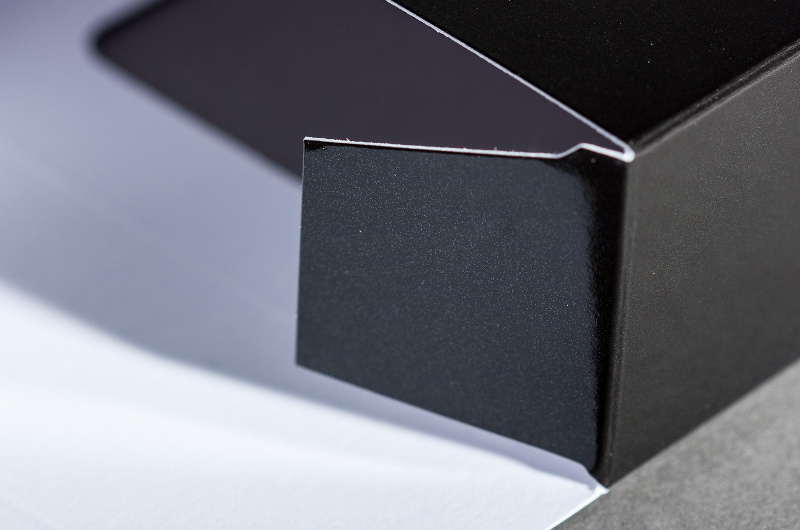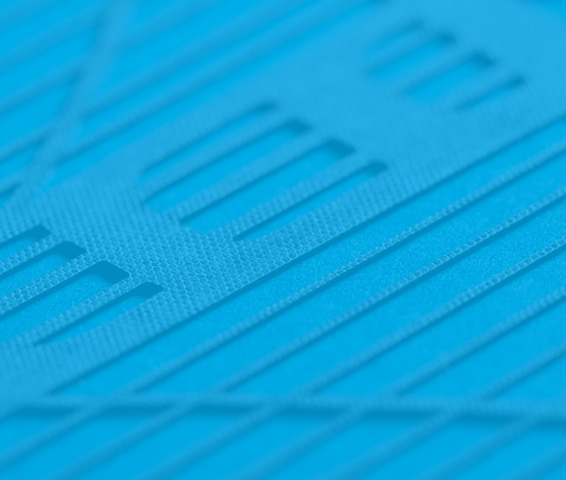PAPER DIE-CUTTING IN MUNICH
Printing Post-Processing
with decades of experience
PAPER DIE-CUTTING - SUSTAINABLE AND ECONOMICAL
Diecutting is arguably the oldest and most cost-effective form of refinement, and it is particularly sustainable. The paper is exclusively mechanically processed, with no use of varnishes or inks. Using individually crafted die-cutting forms, we produce even large quantities sustainably and precisely.
In just one operation, your products can be scored, creased, perforated, embossed, and die-cut. The die-cutting forms can be reused multiple times, allowing us to produce smaller quantities cost-effectively as well.
Punching, Creasing, and Perforating at Stigler
STIGLER REFERENCES
The punching, creasing, and perforating of paper
as well as thicker materials like cardboard offer significant potential
for high-quality print finishing.
Die-cutting demands a wealth of technical expertise and a passion for paper. This traditional craft offers visual and tactile highlights, but its functionality should not be underestimated. A seemingly infinite variety of shapes for your individual brochures, folders, packaging, folding cartons, etc., can be realized through die-cutting. From a single business card to a 140 x 100 cm display, everything is possible; in many cases, even without disruptive notches.
A particular advantage of this finishing process:
We also perform die-cutting on the finished product without a gripper edge. For more information, please visit Contour Die-Cutting.
When die-cutting with steel rule, all machines used operate with custom-made die forms, but the functionalities vary greatly. Machines are distinguished by flat-round development or flatbed die-cutting, as well as machines with scale, single-sheet, or hand-fed systems. Depending on the product, material, and quantity, we will find the optimal die-cutting solution for you.
Plastic Die-Cutting in Kirchheim near Munich
Plastic Stamping - Precision, Versatility, and Quality
Stamping is a proven process in plastic processing as well. It enables the efficient and cost-effective production of plastic components for a variety of applications. At [Your Company], we manufacture precisely shaped parts from flat plastics and plastic foils, accommodating not only simple geometric shapes but also more complex contours. A wide range of materials can be stamped, including PVC, PET, polyethylene, polypropylene, and many others.
Advantages of Plastic Stamping:
- Precision Shaping: The process allows for the production of plastic parts with tight tolerances and high accuracy.
- Efficiency: The rapid production process enables cost-effective manufacturing at high production rates.
- Repeatability: The process delivers consistent results even with high volumes or repeat orders.
Overall, plastic stamping is a proven method for producing custom plastic parts for various applications. It offers a combination of precision, efficiency, and cost-effectiveness, making it an attractive option in plastic processing.
Plastic Die Cutting at Stigler
With our expertise and a well-equipped machinery, we offer numerous possibilities for plastic processing. For special requirements, machines with a sheet format of up to 100 x 140 cm are available.
In addition to our die-cutting machines, we employ various laser systems. Especially during the product development phase, lasers are ideal for cost-effective production of test series. Adjustments in shape and size can be tested without the need for die-cutting tools.
Moreover, for the mass production of plastic parts, the use of laser systems can be beneficial, particularly when manufacturing highly complex shapes.
Whether you want to create prototypes for innovative products or seek customized solutions for existing projects, our team is dedicated to supporting you from conception to delivery with considerable experience and commitment.
As an additional service, we offer storage of raw materials for our clients until processing. We also provide storage for finished products and on-demand shipping.
MANUFACTURING AT STIGLER - YOUR ADVANTAGES
| You receive expert consultation. |
| Our team is well-trained and motivated. |
| We manufacture with a focus on quality and ensure timely delivery. |
| A versatile range of machinery is at your disposal. |
THESE MATERIALS CAN BE DIE-CUT
-
Paper and Cardboard
-
Chipboard and Corrugated Board
-
Synthetic Papers, e.g., Tyvek
-
Adhesive Paper and Labels
-
Self-adhesive Films
- Plastic Films
- Textile Materials
- Wood Veneer
- Magnetic Film
- Priplak, and more
FOR EXCEPTIONAL RESULTS...
...here are some insights from the die-cutting routine:
- Colors and varnishes must be thoroughly dried before further processing, so plan enough drying time accordingly.
- Score lines should be omitted in UV varnish to prevent varnish breaks.
- For cellophane sheets, no film remnants should extend beyond the edge during processing.
- Ensure that the printed sheets lie flat during palletizing and stretching, avoiding corners being turned up.
DIE CUTTING TOOLS: INDIVIDUAL AND PERFECTLY TAILORED
The die-cutting tools are created individually and tailored to your specific order. We achieve the highest quality by perfectly aligning the components used with your product. We are happy to professionally store the die-cutting tools after production, making them readily available for your next use.
GETTING DIE-CUTTING TOOLS MADE - THE RIGHT FORMAT
For die-cutting, PDF data or data from common graphic programs serve as templates. Since only the contours are used for constructing the die-cutting tools, the die-cutting facility requires only those specific details. Different cutting lines can be visually distinguished from other lines. Alternatively, fold or perforation lines can be represented as dotted or dashed. When different processes are combined, no additional files are needed. Precision is crucial in the production of die-cutting tools for notch-free die-cutting, and we coordinate closely with the die-cutting tool builder.
FREQUENTLY ASKED QUESTIONS ABOUT DIE CUTTING, SCORING, PERFORATING
HOW DOES DIE-CUTTING WORK?
In die-cutting with steel strip, a die is pressed onto the material in a die-cutting machine with significant pressure. The material is then fully or partially cut out at the desired locations using the cutting blades.
WHY IS PAPER SCORED?
For precise and clean folding, the material (paper, cardboard, or carton) is initially scored. A score line is impressed into the paper, causing the paper to be "indented" and creating a score. This score allows the material to be neatly folded without causing paper breakage. When a product is both die-cut and scored, this is typically done in a single step. Cutting blades and score lines are integrated into the die.
WHAT IS THE DIFFERENCE BETWEEN SCORING AND GROOVING?
Generally, both terms are used interchangeably in paper processing. Occasionally, "grooving" is described as the process of removing (milling) material for better folding, especially in thicker materials like cardboard.
WHAT IS PERFORATION IN PAPER?
Perforation involves punching small spaced holes along a desired line in the paper. The uncut sections (bridges) provide stability to the paper, but it can be easily torn by hand along the perforation line. This is known as tear perforation.
A fold perforation is also commonly used; it can replace scoring and enables easy folding, for example, in fold sheets for book or brochure production.
Depending on the intended use and the material, the ratio of cut length to bridge length is determined. The length is measured in points (pt).
For example, in a 2pt to 2pt perforation, both the cut and the bridge are approximately 0.7 mm long.
DISCOVER WHAT WE CAN STILL DO
From Gutenberg to Laser-Cut - that's how we span the wide range of print finishing!
To our Services




